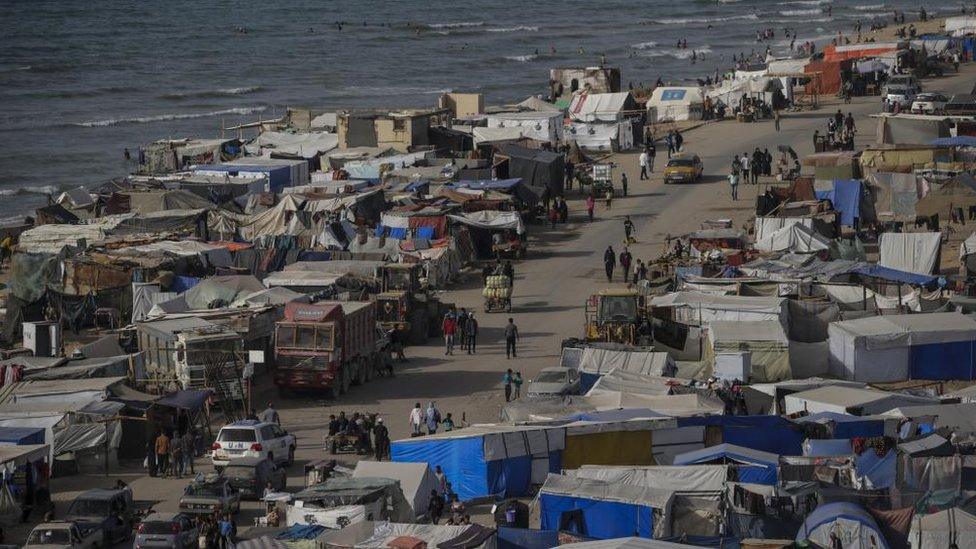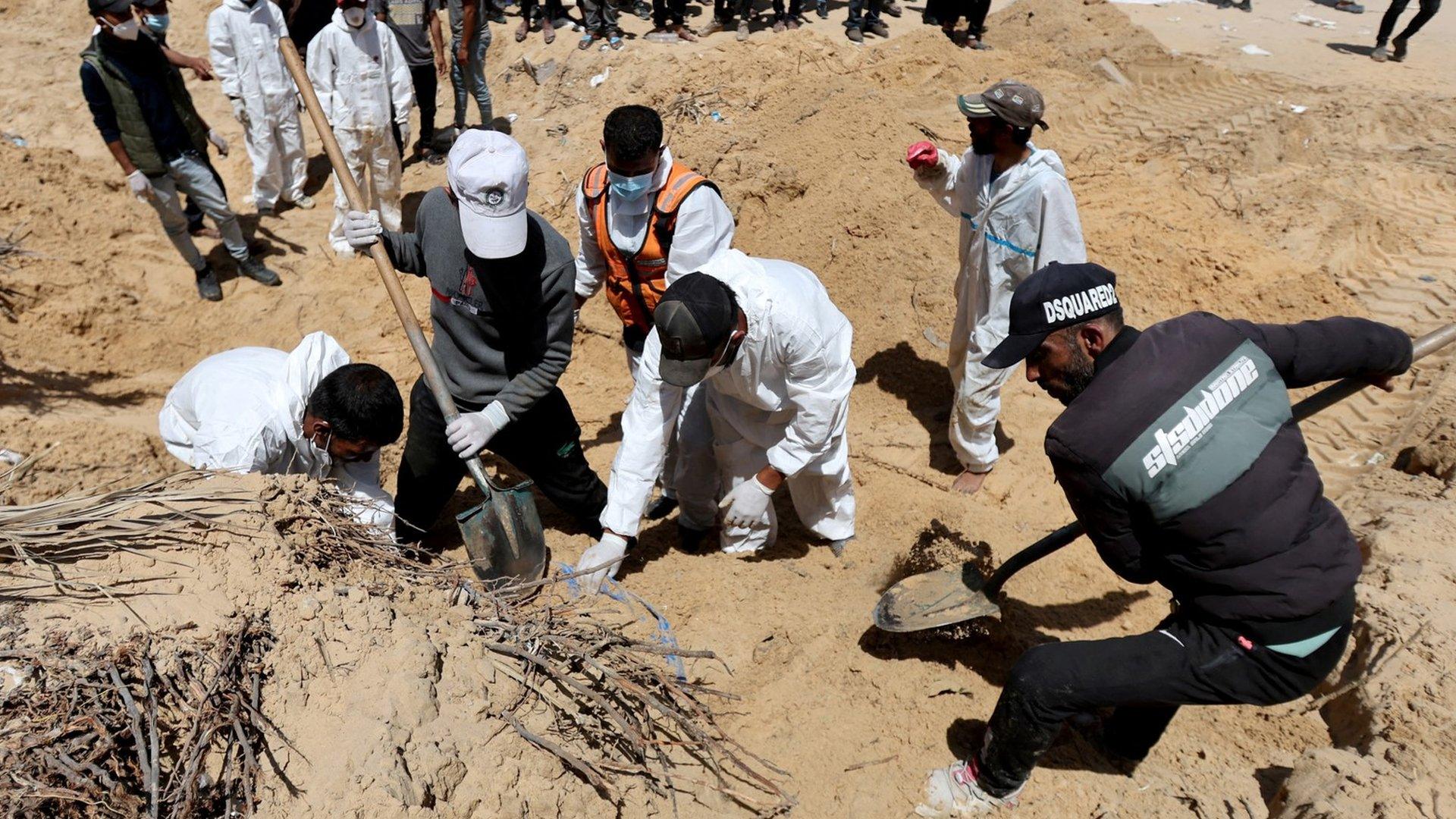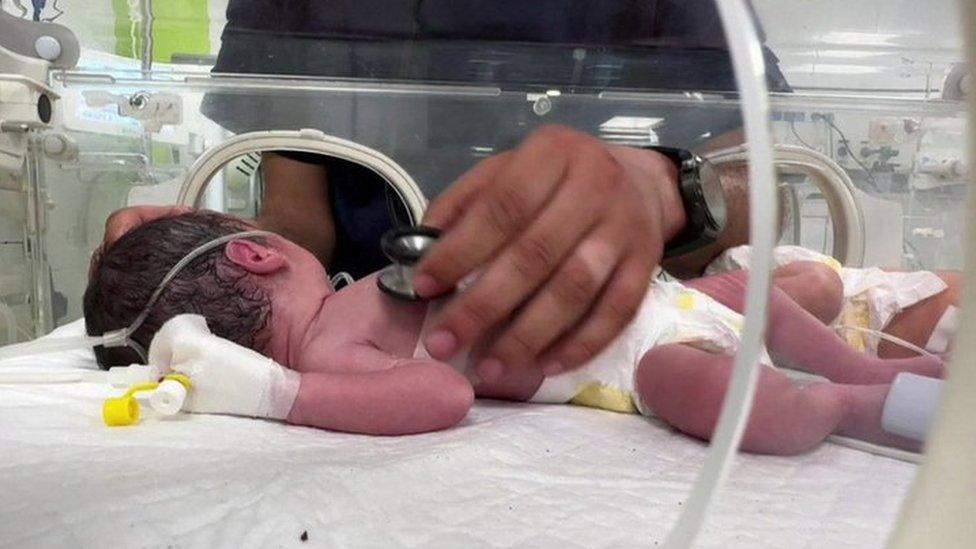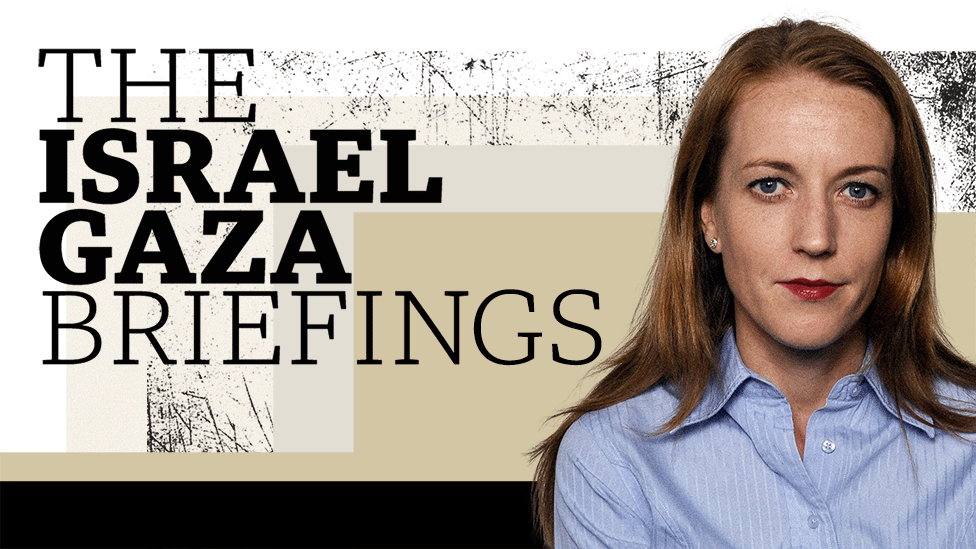Tents appear in Gaza as Israel prepares Rafah offensive
- Published

Some Palestinians have already left Rafah for parts of central Gaza, where others from northern Gaza are also sheltering
Satellite images show two new tent encampments in southern Gaza as reports suggest Israel's military is preparing for an offensive in the city of Rafah.
Rafah, by the border with Egypt, is the only city in Gaza it has not yet entered. Well over a million people have been sheltering there for months.
The US has said a plan to protect them must be in place before any offensive.
Israeli PM Benjamin Netanyahu insists entering Rafah is necessary to defeat Hamas and search for hostages.
The current war began when Hamas attacked Israeli communities near Gaza, killing about 1,200 people, mainly civilians, and taking about 250 hostages. Israel's subsequent campaign of aerial bombardment and ground operations in Gaza has killed 34,183 people, mostly civilians, according to the Hamas-run health ministry there.
Over the six months of war, the Israel Defense Forces (IDF) have entered and taken control of all of northern Gaza including Gaza City and most of central and southern Gaza including the main southern city of Khan Younis.
They have since withdrawn from almost all of those areas but troops remain stationed on a road Israel has built that separates northern and southern Gaza.
However Israeli bombardment has continued across Gaza including in Rafah, where about 20 people, mostly children, were killed in air strikes on Saturday.

The satellite pictures show rows of tents at a site to the west of Khan Younis and at another site near Rafah. Before and after pictures showed that both encampments had been constructed this month.
Earlier this month Israeli media reported that Israel was buying 40,000 tents to prepare for the evacuation of Palestinian civilians from Rafah. On Wednesday Reuters quoted Israeli government sources as saying each tent could hold between 10 and 12 people.
Meanwhile Israeli media reports said preparations to evacuate civilians from Rafah were under way. Israel HaYom newspaper said the Israeli government had decided to carry out an operation in Rafah "very soon" after negotiations between Israel and Hamas aimed at agreeing a truce and the release of hostages stalled. Other Israeli papers had similar reports.
US media have quoted Israeli and Egyptian officials as saying that civilians in Rafah will be moved to Khan Younis and other areas including al-Mawasi - a sandy coastal area between Rafah and Khan Younis that Israel designated as a "humanitarian zone" earlier in the war - over the course of several weeks.
Israeli troops would enter Rafah in stages, the Egyptian officials were quoted as saying, with fighting predicted to take about six weeks.
A senior Israeli defence official told Reuters the military had completed preparations and was ready to launch an offensive on Rafah as soon as ordered.

Mr Netanyahu's office and the IDF have not yet commented. However the military said it had mobilised two reservist brigades for missions in Gaza.
Israeli officials say there are four Hamas battalions in Rafah and their numbers have been reinforced by thousands of fighters who have retreated there from other parts of Gaza.
"Hamas was hit hard in the northern sector. It was also hit hard in the centre of the Strip. And soon it will be hit hard in Rafah, too," Brigadier-General Itzik Cohen told Israeli public TV on Tuesday.
On Friday US secretary of state Antony Blinken said the US "cannot support a major military operation in Rafah" a day after the US and Israel held a virtual meeting to discuss an offensive.
He said the US had not yet seen a plan for getting civilians out of harm's way and any military operation would have "terrible consequences" for civilians who remained in Rafah.
Conditions in the overcrowded southern city are already dire, with displaced people there telling the BBC there was a lack of food, water and medication.
Earlier this month some displaced Palestinians in Rafah attempted to return to northern Gaza but were forced back by the Israeli military. Witnesses said its forces had opened fire on crowds heading along a main coastal road. killing five people. The IDF did not comment directly on that incident but did say that Palestinians should stay in southern Gaza because the north is a "dangerous combat zone".
Israel has not said when Palestinians displaced from northern Gaza will be allowed to return there - a key demand made by Hamas in stalled ceasefire talks.
There has also been renewed fighting in parts of northern Gaza, with the Israeli military shelling areas near the towns of Beit Hanoun and Beit Lahiya as well as the Jabalia refugee camp and the Gaza City suburb of Zeitoun.
"The bombing from tanks and planes didn't stop," said Um Mohammad, 53, a mother-of-six living close to Zeitoun.
"I had to gather with my children and my sisters who came to shelter with me in one place and pray for our lives as the house kept shaking," she told Reuters.

Related topics
- Published24 April 2024

- Published22 April 2024

- Published20 April 2024
